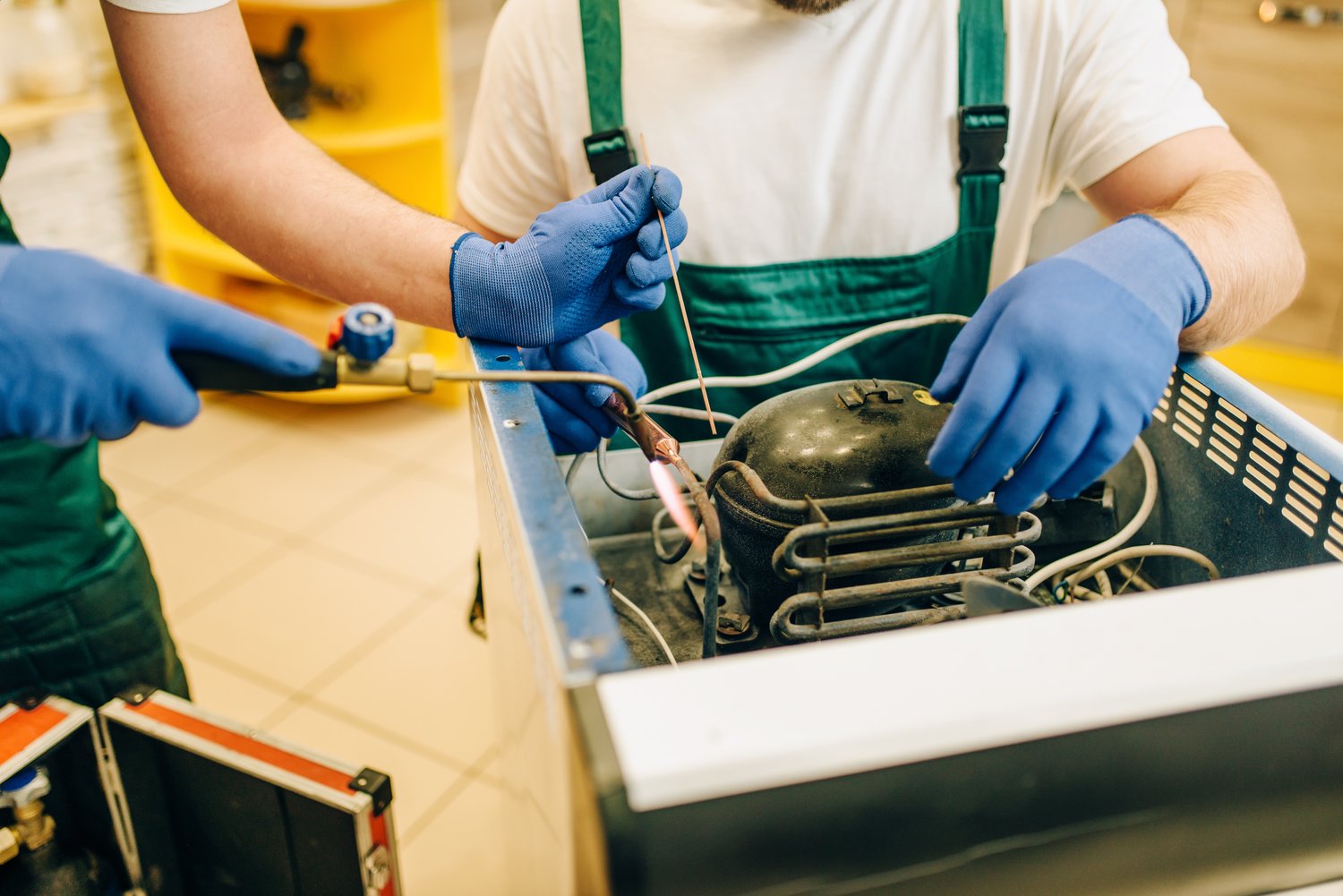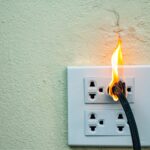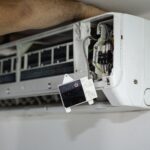When your restaurant is bustling with customers and the ice maker suddenly stops working, it can throw a cold wrench in your operations. Understanding why your ice maker might be malfunctioning isn’t just an inconvenience; it’s crucial for keeping your kitchen running at peak efficiency. Whether you’re managing a trendy cafe or a high-traffic diner, having a reliable ice maker is non-negotiable, and knowing how to diagnose its issues yourself can save you both time and money.
- Explore typical causes of ice maker malfunctions, such as power supply issues, water flow interruptions, and clogged filters, and learn how to identify these problems.
- Gain insights into safe troubleshooting techniques for electrical problems like faulty wiring or blown fuses that may be affecting your ice maker’s performance.
- Discover how to efficiently resolve water supply issues, including kinks in the water line or inadequate pressure, to ensure smooth functioning of your ice maker.
- Find out effective cleaning techniques and schedules to prevent common ice maker issues and keep it in top condition.
Dive into this guide to uncover practical solutions that will help maintain your ice maker’s efficiency and longevity. With these DIY tips, you can avoid costly repairs and ensure uninterrupted service, all while setting your kitchen up for success. Share your own experiences and insights as you master the art of keeping your ice maker in perfect working order.
Common Reasons Why Is My Ice Maker Not Working? DIY Diagnosis and Fixes
Ice makers are crucial to the smooth operation of any commercial kitchen, but they are not immune to malfunctions. Understanding the common reasons why your ice maker might not be working is the first step in resolving these issues.
One typical cause of ice maker problems is a disruption in the power supply. Ensure that your ice maker is properly plugged in and receiving power. Moreover, check for tripped circuit breakers which might prevent the machine from functioning.
Another frequent issue is water flow interruptions. If water isn’t reaching the ice maker, inspect the water line for kinks or blockages. Water supply valves should also be checked to ensure they are open and water is flowing freely.
Clogged filters can also cause malfunctions. If the filters are obstructed, they can impede water flow and hinder ice production. Regularly replace filters to maintain optimal performance.
Understanding these core issues will not only help you diagnose the reasons your ice maker is not working but will also guide you in finding the most effective solutions.
Power and Electrical Issues
Electrical issues are a common problem that can greatly affect your ice maker’s performance. Faulty wiring can disrupt the power connection, leading to malfunctions or a complete shutdown of the ice maker. Inspect the wiring for any visible damage or loose connections, but always remember to prioritize safety by turning off the power before attempting any checks.
Another issue could be blown fuses. If a fuse is blown, it will prevent power from reaching your ice maker. Locate the ice maker’s fuse and assess whether it needs replacement.
To troubleshoot these electrical problems:
1. Ensure safety first: Before you begin, unplug the ice maker to prevent any electric shock.
2. Check circuit breakers: Visit your breaker panel to see if any breakers are tripped and reset them if necessary.
By addressing these power and electrical challenges, you can restore your ice maker’s functionality and keep your kitchen operations running smoothly.
Water Supply Problems Why Is My Ice Maker Not Working? DIY Diagnosis and Fixes
One of the most frequent causes of ice maker malfunctions is related to water supply issues. If your ice maker isn’t working, checking the water line should be one of your first steps. Problems such as kinks in the water line or inadequate water pressure can significantly impact the ice making process.
A kinked water line restricts water flow, leading to reduced or no ice production. Carefully inspect the water line for any visible signs of bends or twists and straighten them gently to ensure proper water delivery. In addition, ensure that the line is connected securely to the water source.
Inadequate water pressure is another common problem that can disrupt ice production. Use a pressure gauge to check if the pressure meets the manufacturer’s recommended levels. Adjusting the pressure regulator or contacting a professional can help restore the optimal water flow, ensuring efficient ice production.
Tackling these water supply issues promptly can prevent more complex problems down the line, keeping your ice maker functional and your operations smooth.
Cleaning and Maintenance Tips
Regular cleaning and maintenance are essential to prevent common ice maker issues and ensure long-term reliability. Over time, mineral deposits and mold can build up, affecting ice quality and equipment efficiency.
A thorough cleaning schedule should include wiping down the interior surfaces with a mild detergent solution, followed by rinsing with clean water. Pay close attention to the ice bin and evaporator, as these areas are prone to buildup.
Descaling is an important part of maintenance. Use a commercial descaling solution to remove mineral deposits from internal components. This process should be carried out according to the manufacturer’s recommendations.
For optimal performance, clean the ice maker every 3 to 6 months, depending on usage frequency and water quality. Regularly changing any water filters is also crucial in maintaining cleanliness and ensuring the longevity of your ice maker.
By implementing these effective cleaning techniques and adhering to a consistent maintenance schedule, you can prevent avoidable breakdowns and extend the life of your equipment.
Temperature Troubleshooting in Why Is My Ice Maker Not Working? DIY Diagnosis and Fixes
Temperature settings play a crucial role in the functionality of your ice maker. Incorrect temperature can lead to inefficient ice production or even complete malfunction of the appliance. It’s essential to understand how both the internal settings and the external environment can impact your ice maker’s performance.
Optimal Temperature Settings: Ensure that your ice maker’s interior temperature is set within the recommended range provided by the manufacturer. Typically, this should be around -7 to -9 degrees Celsius (19 to 16 degrees Fahrenheit) for consistent ice production.
Environmental Factors: Placement of your ice maker can dramatically influence its efficiency. Avoid placing the unit in areas subjected to temperature extremes, such as direct sunlight or near ovens. High ambient temperatures can overwork the compressor and cause delays in ice production.
Monitoring and Adjustments: Regularly check the ice maker’s thermostat to ensure accuracy. Consider using an external thermometer to cross-verify the internal temperature. If discrepancies are found, calibrate the thermostat according to the manufacturer’s instructions.
Common Temperature-Related Issues: If your ice maker is producing hollow or small ice cubes, it might be due to incorrect temperature settings. Adjusting the freezer’s temperature to a colder setting may help resolve this issue.
By carefully managing these factors, you can optimize the performance of your ice maker, ensuring a steady supply of ice for your professional kitchen or food service business. If you’ve experienced temperature-related challenges with your ice maker and have practical solutions, consider sharing your insights to assist others.
Frequently Asked Questions About Ice Maker Issues
Why is my ice maker not producing any ice?
Check power supply: Ensure the machine is plugged in and powered on. Inspect water supply: Verify the water line is not kinked or blocked.
What should I do if my ice maker leaks water?
Check connections: Tighten any loose water line connections. Inspect for clogs: Ensure the drain is clear of obstructions.
How often should I clean my ice maker?
Regular cleaning: Clean every 3 to 6 months with a recommended cleaner to ensure efficiency.
How do I adjust the ice maker’s temperature settings?
Consult the manual: Follow instructions to set temperature between 0 and 5 degrees Fahrenheit for optimal ice production.
What are common signs of a blocked filter?
Signs include: Reduced ice production, poor ice quality, or unusual noises. Replace the filter if these are present.





